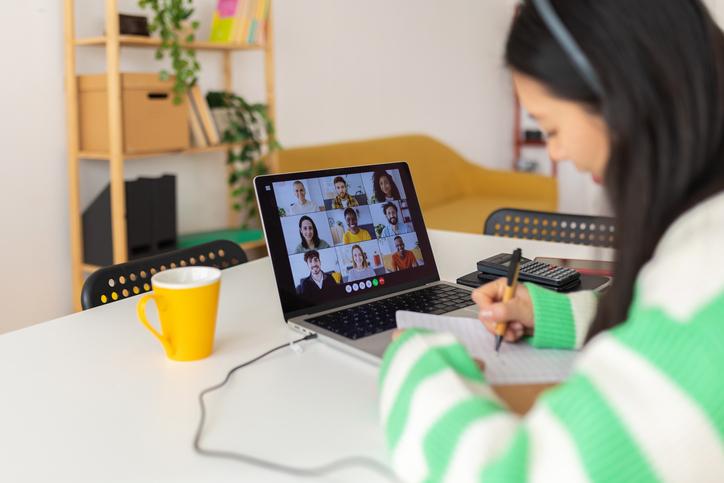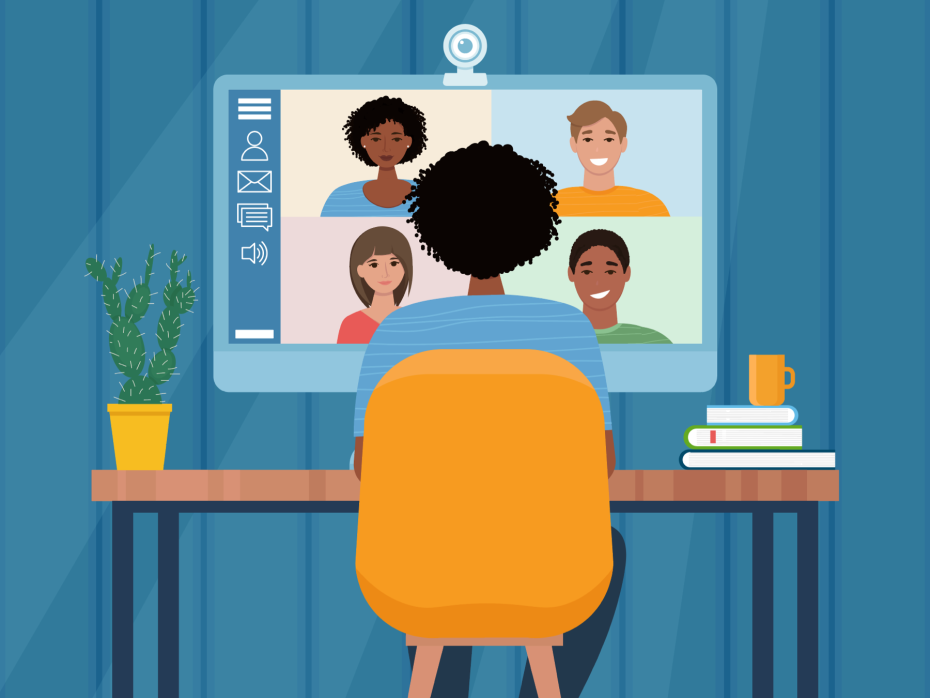To collaborate or not to collaborate – that is the question. Students choose online study for many reasons – the flexibility of learning around caring or work commitments; the desire for more agency in their studies. But when planning lessons, educators often build in paired or group tasks, through forum discussion, shared presentations or other collaborative activities.
Before designing our own study to gather student voices and experiences in this area, we conducted a literature review. It showed that, more often than not, students found online group work anxiety-inducing and frustrating.
What does the literature say?
Students are not always positive about online group work, research has found. The students who actively participate feel frustrated with those who don’t. Being dependent on others to achieve a desired outcome can cause anxiety. Students may also worry about letting others down – they might feel their work is not up to standard and so be anxious about sharing ideas with the group.
This differs from in-person lessons as students may feel less anxiety when they’ve met face to face, and also have the physical presence of the tutor to mediate and facilitate the group conversations.
- Can transferable skills be taught in distance learning?
- How to boost student motivation and engagement in virtual classrooms
- Bringing the human touch into the virtual classroom
Both Millennial and Gen Z students prioritise their sense of autonomy, so the lack of control that occurs in collaborative tasks can be challenging.
Collaborative activities can be difficult for those who value online study for the flexibility it offers. Group work, with the need for meetings and shared deadlines, is contrary to this way of working and can be seen as unwelcome.
But many students enjoy collaborative work and find it “rewarding”. Collaborative tasks can lessen feelings of isolation that distance learning sometimes brings and students recognise teamwork as an important skill to develop.
So what do students really think?
We tested this through our implementation of two tasks as part of our research. Participants were all current students enrolled on an online degree. Task A asked the group to create a presentation titled “All about us”, where each participant created a digital slide or page about themselves, their interests and career ambitions. Task B involved the group planning a science activity for parents and carers and then designing the lesson plan.
After participants took part in both Task A and Task B, they attended one-to-one interviews with the researchers. We found that students reported that they worked best together when they could each prepare a separate part of the shared work and bring it together for submission. They preferred the style of Task A, which allowed for each student to work in their own time before adding their page to the shared presentation. This supports Helen Donelan and Karen Kear’s earlier study, which noted a mode of collaboration where all members worked separately on their own pages towards a shared goal.
The participants reported that they had enjoyed group work for the chance to meet someone new and learn from them, and that they also developed empathy and understanding from hearing other students’ experiences. Challenges had come from lack of participation from some members, and taking time to decide which platform or tool to use where it had not been prescribed by the tutor.
Design and context are important when developing online collaborative activities, and careful preparation is needed if collaborative work is to be successful. We argue, also, that we should consider planning for student cooperation, rather than collaboration. Here are the most important takeaways, picked up from listening to our student participants.
- Specify which platform or tool students should use rather than offering choice. This reduces anxiety and preparation time.
- Give students more time for group tasks than independent tasks to factor in the necessary time for the initial communications to happen before the work can begin.
- Offer scaffolding and steps as a suggested blueprint for students to follow, including “soft” deadlines as to when each part of the task should ideally be completed.
Provide clear guidance to counter anxiety, and aim to develop students’ collaborative skills in preparation for group activities.
Perhaps the greatest value in group tasks is learning to navigate conversations and cooperation with others, rather than the academic content at hand. These are the skills we should focus on when embedding collaborative work into our curricula.
Poppy Gibson is lecturer in education, Sagun Shrestha is research associate and Helena Staskiewicz is associate lecturer; all at The Open University.
If you would like advice and insight from academics and university staff delivered direct to your inbox each week, sign up for the Campus newsletter.




comment